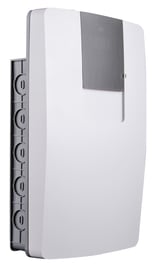Revenue grade power meters are defined in the American National Standards Institute (ANSI) standard C12.20-2010 Class 0.2. The intention of such a standard is to establish the requirements for power meters so the meters in question accurately and reliably provide monitoring. This ANSI standard has 3 accuracy classes: 0.1, 0.2, and 0.5. These classes correspond to accuracy at full load and include CTs.
ANSI Standard C12.20-2010 also covers:
- voltage and frequency ratings
- test current values
- service connection arrangements
- environmental tests
- acceptable performance of the meters and associated equipment
Revenue Grade VS Non-Revenue Grade
Revenue grade power meters provide building owners with the data necessary to charge tenants for individual energy use. These meters also allow for participation in utility rewards programs. To be a revenue grade power meter, it must have an accuracy of 0.5% or higher.
Non-revenue grade power meters help building owners better understand energy usage to make informed decisions. Unlike revenue grade meters, those falling into this category cannot be used for individual tenant consumption or participation in demand response programs. Power meters in this category typically have accuracies between 0.5% and 2%.
Although a meter might not be certified to be revenue grade by a third party, it can still meet the accuracy requirements for such a meter. In those cases, the meter can be used in applications that do not require certification but do require those accuracies. Third-party certification for revenue grade metering is often determined and enforced by local authorities, such as in the city of New York. Some applications where revenue grade accuracy is important include:
- Tenant metering
- Utility bill checking
- Meter checks



